#Crouching Tiger Hidden Dragon International Film Festival
Text

RETRATOS FANTASMAS première na China, Pingyao Crouching Tiger Hidden Dragon International Film Festival. Bom ver a Ponte Duarte Coelho na China. Imagens voam.
via Kleber Mendonça Filho
@kmendoncafilho
#Pingyao#china#china movie theater#Crouching Tiger Hidden Dragon International Film Festival#cinema brasileiro#brazil#brasil#huji aesthetic#still life#still photography#sao paulo#sp#recife#pernambuco#kleber mendonça filho#cinemaderua#cinemabrasileiro#brazilian cinema#cinema#china premiere#pictures of ghosts#retratosfantasmas#retratos fantasmas
3 notes
·
View notes
Text



Zhu Yilong for film Only the River Flows’ press con at the 7th Pingyao Crouching Tiger Hidden Dragon International Film Festival
#zhu yilong#fashion#only the river flows#7th pingyao crouching tiger hidden dragon international film festival
3 notes
·
View notes
Text


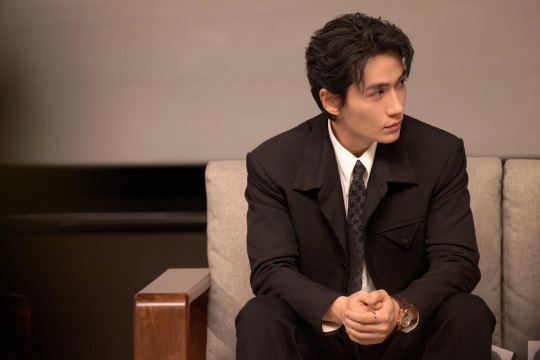
ZYL studios weibo update 10/12 [last night’s attendance at the 7th pingyao [crouching tiger hidden dragon] international film festival
22 notes
·
View notes
Text


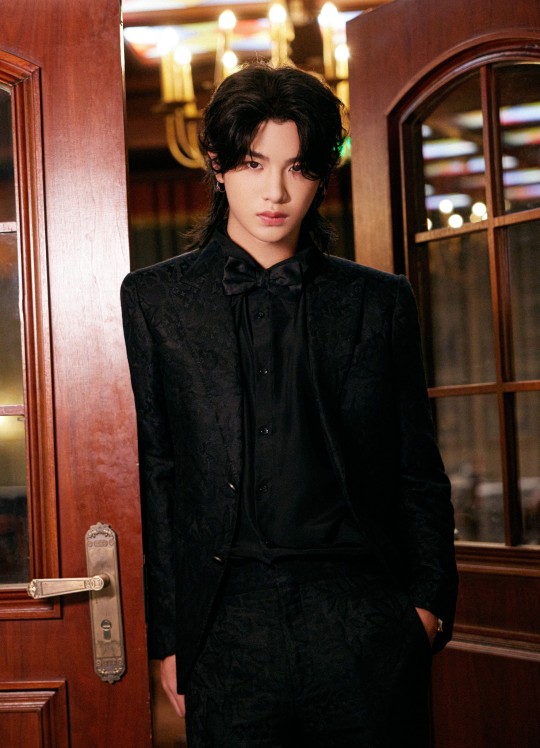
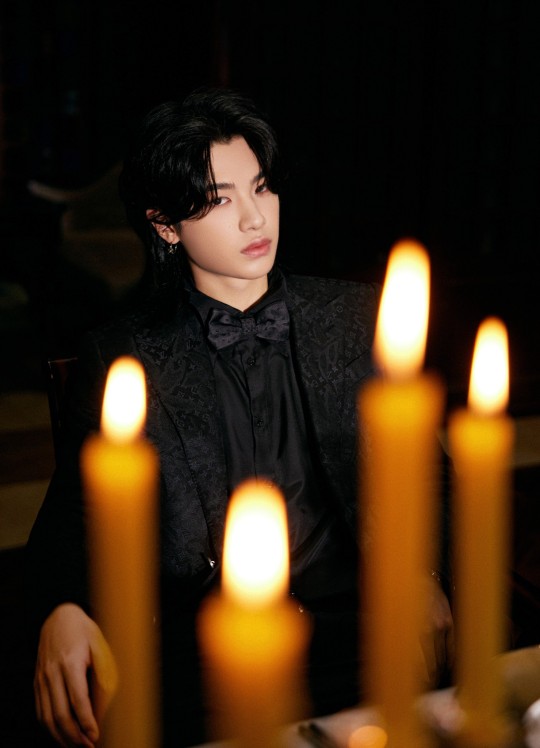


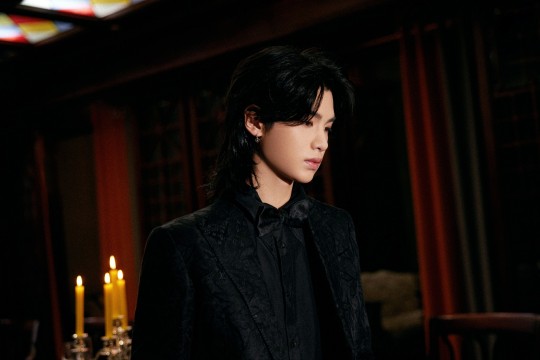
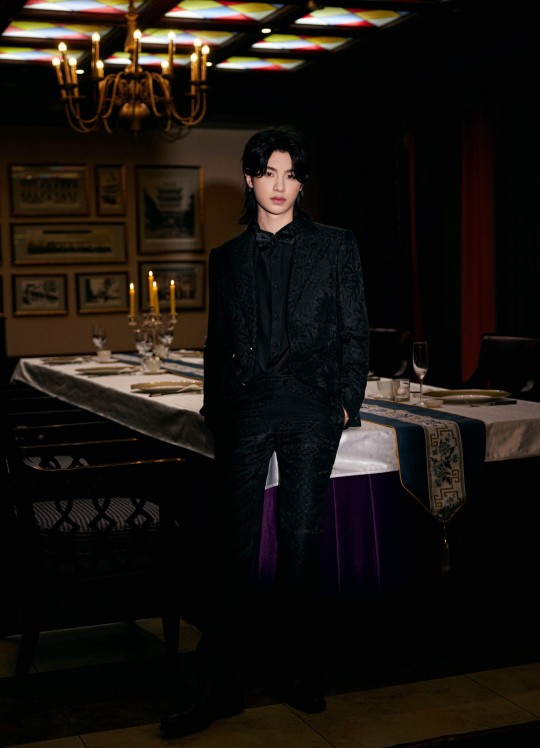

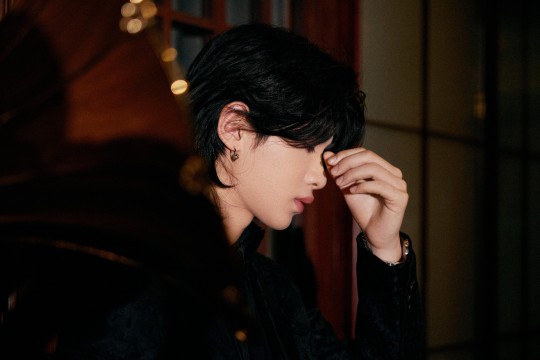
7th Pingyao Crouching Tiger Hidden Dragon International Film Festival closing ceremony
5 notes
·
View notes
Text
Holidays 12.8
Holidays
Battle Day (Falkland Islands)
Be Someone's Pillow While You Watch TV Night
Bodhi Day (Japan)
CARICOM-Cuba Day
Colorism Awareness Day
Constitution Day (Romania; Saipan; Uzbekistan)
COVID-19 Origin Day
Day of Finnish Music (Finland)
Human Rights and Peace Day (Kiribati)
International Day of the Artist
Ivy Day (French Republic)
Kliment Ohirdski (Macedonia)
Latina Equal Pay Day 2022 ( website )
Mother’s Day (Panama)
National Blue Collar Day
National Christmas Tree Day
National Crossword Solvers Day
National Dave Day
National Donair Day (Canada)
National Family Day Darn It
National Health Savings Account Day
National Simon Day
National Students’ Day (Bulgaria)
National Tree Planting Day (Malawi)
National White People Take BLM Out of Your Profile Day
National Youth Day (Albania)
Nicki Minaj Day
Night of the Lizard King
Pansexual Pride Day
Popeye Day
Pretend To Be A Time Traveler Day
Studrntski Praznik (Students’ Day; Bulgaria)
Take It In the Ear Day
Winter Flowers Day
World Climate Day
World Indica Day
World TAPS Awareness Day
Food & Drink Celebrations
Lemon Squeezer Day
National Chocolate Brownie Day (a.k.a. Brownie Day)
National Lard Day
2nd Friday in December
National Salesperson's Day [2nd Friday]
Official Lost and Found Day [2nd Friday]
Independence Days
H.E.R. (Humanitarian Empire and Realm; Declared; 2020) [unrecognized]
Feast Days
Adolph Menzel (Artology)
Afflux (Discordian)
Albert Gleizes (Artology)
Aristide Maillol (Artology)
Army Day (Spain)
Astraea's Day (Greek Goddess of Justice)
Budoc (Beuzec) of Dol (Christian; Saint)
Chesty Puller Day (Church of the SubGenius; Saint)
Clement of Ohrid (Julian Calendar)
Day of Tiberinus (Pagan)
Diego Rivera (Artology)
Eucharius (Christian; Saint)
Feast of the Immaculate Conception (Christian) [a.k.a. ...
Blessing of the Water Day (Uruguay)
Conception of the Blessed Virgin Mary (Anglican Communion)
Dia de las Playas (Day of the Beaches or Family Day; Uruguay)
Festa da Conceição da Praia, celebrating Yemanjá, Queen of the Ocean in Umbanda (Salvador, Bahia)
Festival of Lights (Lyon)
Immaculate Conception Day (Christian Nations)
Mother's Day (Panama)
Our Lady of Camarin Day (Guam)
Festival of Tiberinus (Ancient Rome)
Festa da Conceição da Praia (celebrating Yemanjá, Queen of the Ocean; Brazil)
Garlic Bread Day (Pastafarian)
Hanukkah Day #1 (Judaism) [thru Dec. 15th]
Hari-Kuyō (Shinto Festival of Broken Needles; Japan)
Kliment Ohridski (Christian; Saint ) [Malta]
Marian Kamalen (Christian; Saint) [Guam]
Patapios of Thebes (Christian; Saint)
Pope Eutychian (Christian; Saint)
Richard Baxter (US Episcopal Church)
Rohatsu (Bodhi; Buddhism)
Romaric (a..k.a. Romanic; Christian; Saint)
The Six Dwarves (Muppetism)
Virgin of Caacupé Day (Paraguay)
Volta (Positivist; Saint)
Wifredo Lam (Artology)
Lucky & Unlucky Days
Lucky Day (Philippines) [67 of 71]
Taian (大安 Japan) [Lucky all day.]
Premieres
Anne of a Thousand Days, by Maxwell Anderson (Play; 1948)
Babe, by Styx (Song; 1979)
Blade: Trinity (Film; 2004)
Blood Diamond (Film; 2006)
California Dreaming’, by the Mamas & the Papas (Song; 1965)
Children’s Hospital (TV Series; 2008)
Cigars of the Pharaoh, by Hergé (Graphic Novel; 1934) [Tintin #4]
Crouching Tiger, Hidden dragon (Film; 2000)
The Deer Hunter (Film; 1978)
The Disaster Artist (Film; 2017)
Dungeons & Dragons (Film; 2000)
The Holiday (Film; 2006)
The Honey Mousers (WB LT Cartoon; 1956)
Hotel California, by The Eagles (Album; 1976)
In Flanders Field (Poem; 1915)
I, Tonya (Film; 2017)
Merry Little Batman (WB Animated Film; 2023)
Moon River, recorded by Henry Mancini (Song; 1960)
Mr. Fantasy, by Traffic (Album; 1967)
My Heart Will Go On, by Celine Dion (Song; 1997)
On the Town (Film; 1949)
Permanent Damage, by The GTO’s [Girls Together Outrageously] (Album; 1969)
Poor Things (Film; 2023)
Pop Gos Your Heart (WB MM Cartoon; 1934)
Shishkabugs (WB LT Cartoon; 1962)
Silver Streak (Film; 1976)
Sophie’s Choice (Film; 1982)
A Star is Born (Film; 1976)
The Sundowners (Film; 1960)
Symphony No. 7 in A, by Ludwig van Beethoven (Symphony; 1813)
Their Satanic Majesties Request, by The Rolling Stones (Album; 1967)
Surfin’, by The Beach Boys (Song; 1961)
Today’s Name Days
Edith, Elfriede (Austria)
Edita, Euharije, Ljiljana, Marija, Nevenka, Sabina (Croatia)
Květoslava (Czech Republic)
Maria (Denmark)
Külli, Küllike, Külliki, Külve, Külvi (Estonia)
Kylli, Kyllikki (Finland)
Edith. Mariä Empfängnis (Germany)
Patapios (Greece)
Mária (Hungary)
Immacolata (Italy)
Guna, Gunārs, Marieta, Vladimirs (Latvia)
Gedmintė, Guntilda, Vaidginas, Zenonas (Lithuania)
Marion, Marlene, Morgan (Norway)
Boguwola, Klement, Maria, Światozar, Wirginiusz (Poland)
Patapie (Romania)
Marína (Slovakia)
Concepción, Inmaculada (Spain)
Virginia (Sweden)
Potap (Ukraine)
Rohan, Spence, Spencer, Spenser (USA)
Today is Also…
Day of Year: Day 342 of 2024; 23 days remaining in the year
ISO: Day 5 of week 49 of 2023
Celtic Tree Calendar: Ruis (Elder) [Day 11 of 28]
Chinese: Month 10 (Gui-Hai), Day 26 (Geng-Zi)
Chinese Year of the: Rabbit 4721 (until February 10, 2024)
Hebrew: 25 Kislev 5784
Islamic: 25 Jumada I 1445
J Cal: 12 Zima; Fiveday [12 of 30]
Julian: 25 November 2023
Moon: 19%: Waning Crescent
Positivist: 6 Bichat (13th Month) [Volta]
Runic Half Month: Is (Stasis) [Day 13 of 15]
Season: Autumn (Day 76 of 89)
Zodiac: Sagittarius (Day 17 of 30)
0 notes
Text
Holidays 12.8
Holidays
Battle Day (Falkland Islands)
Be Someone's Pillow While You Watch TV Night
Bodhi Day (Japan)
CARICOM-Cuba Day
Colorism Awareness Day
Constitution Day (Romania; Saipan; Uzbekistan)
COVID-19 Origin Day
Day of Finnish Music (Finland)
Human Rights and Peace Day (Kiribati)
International Day of the Artist
Ivy Day (French Republic)
Kliment Ohirdski (Macedonia)
Latina Equal Pay Day 2022 ( website )
Mother’s Day (Panama)
National Blue Collar Day
National Christmas Tree Day
National Crossword Solvers Day
National Dave Day
National Donair Day (Canada)
National Family Day Darn It
National Health Savings Account Day
National Simon Day
National Students’ Day (Bulgaria)
National Tree Planting Day (Malawi)
National White People Take BLM Out of Your Profile Day
National Youth Day (Albania)
Nicki Minaj Day
Night of the Lizard King
Pansexual Pride Day
Popeye Day
Pretend To Be A Time Traveler Day
Studrntski Praznik (Students’ Day; Bulgaria)
Take It In the Ear Day
Winter Flowers Day
World Climate Day
World Indica Day
World TAPS Awareness Day
Food & Drink Celebrations
Lemon Squeezer Day
National Chocolate Brownie Day (a.k.a. Brownie Day)
National Lard Day
2nd Friday in December
National Salesperson's Day [2nd Friday]
Official Lost and Found Day [2nd Friday]
Independence Days
H.E.R. (Humanitarian Empire and Realm; Declared; 2020) [unrecognized]
Feast Days
Adolph Menzel (Artology)
Afflux (Discordian)
Albert Gleizes (Artology)
Aristide Maillol (Artology)
Army Day (Spain)
Astraea's Day (Greek Goddess of Justice)
Budoc (Beuzec) of Dol (Christian; Saint)
Chesty Puller Day (Church of the SubGenius; Saint)
Clement of Ohrid (Julian Calendar)
Day of Tiberinus (Pagan)
Diego Rivera (Artology)
Eucharius (Christian; Saint)
Feast of the Immaculate Conception (Christian) [a.k.a. ...
Blessing of the Water Day (Uruguay)
Conception of the Blessed Virgin Mary (Anglican Communion)
Dia de las Playas (Day of the Beaches or Family Day; Uruguay)
Festa da Conceição da Praia, celebrating Yemanjá, Queen of the Ocean in Umbanda (Salvador, Bahia)
Festival of Lights (Lyon)
Immaculate Conception Day (Christian Nations)
Mother's Day (Panama)
Our Lady of Camarin Day (Guam)
Festival of Tiberinus (Ancient Rome)
Festa da Conceição da Praia (celebrating Yemanjá, Queen of the Ocean; Brazil)
Garlic Bread Day (Pastafarian)
Hanukkah Day #1 (Judaism) [thru Dec. 15th]
Hari-Kuyō (Shinto Festival of Broken Needles; Japan)
Kliment Ohridski (Christian; Saint ) [Malta]
Marian Kamalen (Christian; Saint) [Guam]
Patapios of Thebes (Christian; Saint)
Pope Eutychian (Christian; Saint)
Richard Baxter (US Episcopal Church)
Rohatsu (Bodhi; Buddhism)
Romaric (a..k.a. Romanic; Christian; Saint)
The Six Dwarves (Muppetism)
Virgin of Caacupé Day (Paraguay)
Volta (Positivist; Saint)
Wifredo Lam (Artology)
Lucky & Unlucky Days
Lucky Day (Philippines) [67 of 71]
Taian (大安 Japan) [Lucky all day.]
Premieres
Anne of a Thousand Days, by Maxwell Anderson (Play; 1948)
Babe, by Styx (Song; 1979)
Blade: Trinity (Film; 2004)
Blood Diamond (Film; 2006)
California Dreaming’, by the Mamas & the Papas (Song; 1965)
Children’s Hospital (TV Series; 2008)
Cigars of the Pharaoh, by Hergé (Graphic Novel; 1934) [Tintin #4]
Crouching Tiger, Hidden dragon (Film; 2000)
The Deer Hunter (Film; 1978)
The Disaster Artist (Film; 2017)
Dungeons & Dragons (Film; 2000)
The Holiday (Film; 2006)
The Honey Mousers (WB LT Cartoon; 1956)
Hotel California, by The Eagles (Album; 1976)
In Flanders Field (Poem; 1915)
I, Tonya (Film; 2017)
Merry Little Batman (WB Animated Film; 2023)
Moon River, recorded by Henry Mancini (Song; 1960)
Mr. Fantasy, by Traffic (Album; 1967)
My Heart Will Go On, by Celine Dion (Song; 1997)
On the Town (Film; 1949)
Permanent Damage, by The GTO’s [Girls Together Outrageously] (Album; 1969)
Poor Things (Film; 2023)
Pop Gos Your Heart (WB MM Cartoon; 1934)
Shishkabugs (WB LT Cartoon; 1962)
Silver Streak (Film; 1976)
Sophie’s Choice (Film; 1982)
A Star is Born (Film; 1976)
The Sundowners (Film; 1960)
Symphony No. 7 in A, by Ludwig van Beethoven (Symphony; 1813)
Their Satanic Majesties Request, by The Rolling Stones (Album; 1967)
Surfin’, by The Beach Boys (Song; 1961)
Today’s Name Days
Edith, Elfriede (Austria)
Edita, Euharije, Ljiljana, Marija, Nevenka, Sabina (Croatia)
Květoslava (Czech Republic)
Maria (Denmark)
Külli, Küllike, Külliki, Külve, Külvi (Estonia)
Kylli, Kyllikki (Finland)
Edith. Mariä Empfängnis (Germany)
Patapios (Greece)
Mária (Hungary)
Immacolata (Italy)
Guna, Gunārs, Marieta, Vladimirs (Latvia)
Gedmintė, Guntilda, Vaidginas, Zenonas (Lithuania)
Marion, Marlene, Morgan (Norway)
Boguwola, Klement, Maria, Światozar, Wirginiusz (Poland)
Patapie (Romania)
Marína (Slovakia)
Concepción, Inmaculada (Spain)
Virginia (Sweden)
Potap (Ukraine)
Rohan, Spence, Spencer, Spenser (USA)
Today is Also…
Day of Year: Day 342 of 2024; 23 days remaining in the year
ISO: Day 5 of week 49 of 2023
Celtic Tree Calendar: Ruis (Elder) [Day 11 of 28]
Chinese: Month 10 (Gui-Hai), Day 26 (Geng-Zi)
Chinese Year of the: Rabbit 4721 (until February 10, 2024)
Hebrew: 25 Kislev 5784
Islamic: 25 Jumada I 1445
J Cal: 12 Zima; Fiveday [12 of 30]
Julian: 25 November 2023
Moon: 19%: Waning Crescent
Positivist: 6 Bichat (13th Month) [Volta]
Runic Half Month: Is (Stasis) [Day 13 of 15]
Season: Autumn (Day 76 of 89)
Zodiac: Sagittarius (Day 17 of 30)
0 notes
Text
Blog Post #1 - The globalization of movie

Movies are a window into the world, not merely a means of enjoyment. The globalization of films has grown to be a potent force in today's linked world, bringing cultures, narratives, and feelings from all over the world to our screens. This blog article will examine how globalization has helped films transcend boundaries and improve our lives.
Movies appeal to everyone. Stories told on the silver screen connect with audiences worldwide, regardless of the language they are spoken in or the nation they are from. As the center of the film business, Hollywood has long been a significant driver in the globalization of the film industry. Blockbusters like "Titanic" and "Avatar" have won over audiences from Tokyo to Toronto, demonstrating the universality of good narrative.
Foreign films have gained popularity as Hollywood continues to rule the global film industry, enhancing our cinematic experiences with various viewpoints. In addition to receiving critical praise, films like "Crouching Tiger, Hidden Dragon" (China), "Amélie" (France), and "Parasite" (South Korea) have helped us appreciate other cultures and traditions. They demonstrate the influence of cross-cultural dialogue on cinema.
The popularity of streaming services like Netflix, Amazon Prime, and Disney+ has made international films more widely available. These platforms provide a wide selection of foreign films, allowing viewers to learn about various histories, languages, and cultures. The world of cinema is now more accessible and diversified than ever by pressing "play."
Numerous foreign films are presented at film festivals, including Cannes, Sundance, and the Berlin Foreign Film Festival. These celebrations of the filmmaking craft also help spread foreign films worldwide. They provide skilled filmmakers with a stage to tell their tales and interact with a larger audience.
Movies have a particularly effective way of fostering cross-cultural awareness and promoting it. They can make historical occurrences, societal concerns, and personal experiences more transparent that would not otherwise be the case. Across linguistic and cultural boundaries, films like "Schindler's List," "Life Is Beautiful," and "A Separation" have inspired crucial discussions on global challenges.
In conclusion, the globalization of film is evidence of the value of narrative and the need for human connection. Movies are a constant reminder of our common humanity and the shared language of passion and imagination that links us all as they continue to transcend boundaries and provide peeks into the rich fabric of our planet. The magic of film has no bounds, whether you're watching a Hollywood blockbuster or a foreign indie treasure.
1 note
·
View note
Text
Exploring Cultural Diversity: Global Movies on OTT Platforms
Discovering Cultural Diversity: Must-See Global Movies on OTT

Why Should You Explore Global Movies?
You might wonder why you should venture beyond Hollywood and explore global cinema. Well, there are plenty of good reasons!
1. Unique Perspectives
Global movies offer a fresh take on storytelling. They bring diverse cultures, traditions, and viewpoints to the screen, expanding your horizons.
2. Stunning Locations
You’ll be treated to breathtaking landscapes and cityscapes from around the world. It’s like a virtual vacation without the passport hassle.
3. Rich Storytelling
These films often dive deep into compelling narratives, exploring universal themes of love, family, and the human experience.
4. Award-Winning Gems
Many international films have earned critical acclaim and won prestigious awards. Watching them is like discovering hidden cinematic treasures.
Must-See Global Movies on OTT
Now, let’s get to the heart of the matter — our curated list of must-see global movies available on OTT platforms.
1. “Parasite” (South Korea)
This groundbreaking South Korean film, directed by Bong Joon-ho, made history by winning four Oscars, including Best Picture. It’s a darkly comedic thriller that explores social class divides.
2. “Crouching Tiger, Hidden Dragon” (China)
Directed by Ang Lee, this martial arts masterpiece takes you on an epic adventure through ancient China. It’s a visual feast of breathtaking fights and stunning landscapes.
3. “Amélie” (France)
This whimsical French film, directed by Jean-Pierre Jeunet, follows the life of Amélie Poulain, a young woman who decides to bring happiness to the people around her. It’s a heartwarming and visually enchanting tale.
4. “Life Is Beautiful” (Italy)
Prepare to be moved by this Italian gem directed by Roberto Benigni. Set against the backdrop of World War II, it’s a heartwarming story of a father’s love for his son.
5. “Pan’s Labyrinth” (Spain/Mexico)
Directed by Guillermo del Toro, this Spanish-Mexican dark fantasy film is a mesmerizing blend of reality and fairy tale. It’s a visually stunning and emotionally powerful experience.
How to Get Started
Ready to dive into global cinema? Here’s how to get started:
Choose a Streaming Service: Pick an OTT platform that offers a diverse selection of international films. Netflix, Amazon Prime Video, and Hulu are great choices.
Use Subtitles: Many of these films are in their native languages, so be sure to turn on subtitles if you don’t speak the language. You’ll still enjoy the full experience.
Explore Film Festivals: Keep an eye on international film festivals like Cannes, Berlinale, and Venice. They showcase some of the best global cinema.
Join Film Communities: Online forums and social media groups can help you discover hidden gems and connect with fellow film enthusiasts.
Exploring global movies on OTT platforms is like opening a door to different cultures, stories, and emotions. It’s a journey that promises excitement, laughter, tears, and a deeper understanding of our diverse world. So, next time you’re wondering what to watch on OTT, consider embarking on a cinematic adventure with international films!
FAQs
Are these movies in English?
Not necessarily. Many global films are in their native languages, so you’ll likely need to use subtitles. However, there are also English-language international films.
Do I need to be a film expert to enjoy these movies?
Not at all! These films are for everyone, regardless of your level of film knowledge. They offer universal themes and emotions.
Are global movies suitable for kids?
It depends on the film. Be sure to check the film’s rating and content to determine if it’s appropriate for children.
0 notes
Text
0 notes
Text
Post 6: Paradigm Shift of Asian American Representation in Media

After decades of misrepresentation, the gendered stereotyping of Asian men and women as discussed previously, from Fu Manchu and Dragon Lady/Lotus Blossom tropes, the usage of yellowface, cultural appropriation, and the limiting of Asian actors to a few racially stereotypical roles, at last the racial barriers built by Hollywood were kicked down upon the arrival of Bruce Lee.
While Lee managed to gain some popularity with his role in the tv series The Green Hornet (1966), he was overlooked for lead roles in favor of white actors (Low, 2021). He then decided to leave the U.S. for Hong Kong to advance his career as an actor where he was catapulted to fame after the release of The Big Boss (1971) which was a huge box office success (Blake, 2018). Other films such as First of Fury (1971) and The Chinese Connection (1972) brought Lee into further spotlight which resulted in Hollywood becoming interested in him once again. After Lee revolutionized Hong Kong martial arts cinema, he went on to break through U.S. mainstream media and reconstructed the way Asians were depicted on screen by starting the “kung-fu craze” in the 70s (Desser, 2002).

The unprecedented success of Lee marked a paradigm shift in Hollywood where Asian men, in particular, had previously been pigeonholed into roles as submissive servants, unskilled laborers, reincarnations of Fu Manchu, geeky sidekicks, unattractive, and comedy relief (Low, 2021). This paradigm shift became both a curse and a blessing as his popularity in the 1980s led to the entrenchment of the “All Asians Know Martial Arts” trope (Low, 2021). New martial arts actors that followed such as Jackie Chan and Jet Li were both referred to as “the next Bruce Lee” and martial arts films from this decade went on to inspire and influence action films and martial artists for generations after, even to this day. Bruce Lee is a prime example of the ways and possibilities that powerful stereotypes that have been around for decades can be challenged and broken and consequently change representations of Asian and Asian Americans for generations after.

Following Bruce Lee, the year 2000 was a triumphant year for Asian cinema with Wong Kar-Wai’s In the Mood for Love premiering at the 2000 Cannes Film Festival and Ang Lee’s Crouching Tiger, Hidden Dragon also making its premiere (Low, 2021). Both films were game-changers for Asian films in international theatres but it wasn’t until the release of Crazy Rich Asians (2018) which marked a momentous step in Asian representation being the first film with an all-Asian cast since The Joy Luck Club in 1993 and breaking a record in its premiere as the highest-grossing romantic comedy in a decade (Calub, 2021). The Farewell (2019) also received praise for its authentic depiction of Asian families.

The 2020s marks the “golden age” of Asian representation in cinema, with films such as Minari (2020) winning best supporting actress Oscar for Yuh-Jung Youn (the second ever actress of Asian descent to win in that category) and showcasing an American story with characters not typically seen as American, Parasite (2019) going on to win four Oscar awards, Director Chloé Zhao winning best director for Nomadland (2020) and being chosen to direct the next epic Marvel film Eternals (2021), Shang-Chi and the Legend of the Ten Rings (2021) being the first-ever Asian-led superhero film to make it to theatres, and Squid Game (2021) being the first Korean tv show making history as the most-watched show on Netflix and topping streaming company’s drama charts in all 83 countries (Calub, 2021). All of these allowed Asians and Asian Americans to catch a glimpse of themselves on screen in a way that hasn’t really been shown before however, these films are mostly representing East Asians and not South or Southeast Asians who are still severely underrepresented in mainstream media.
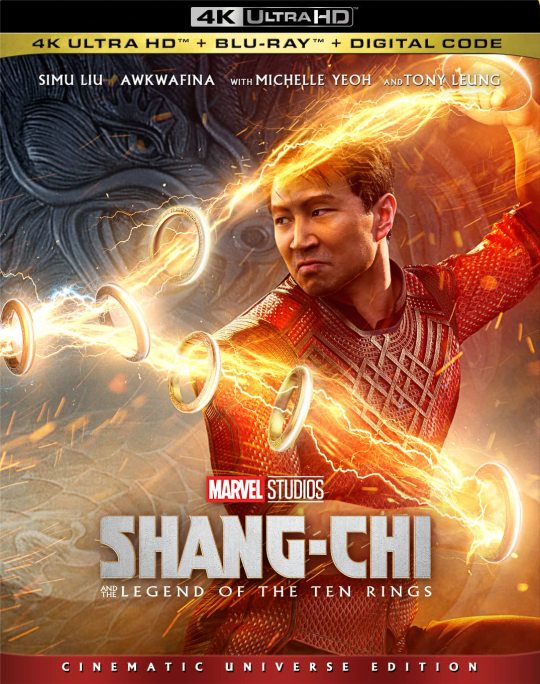
Despite these major breakthroughs in Asian cinema, a study called “I am not a Fetish or Model Minority” reviewed the top 10 grossing movies each year from 2010 to 2019, and noted that among those films, only 4.5 percent of the main cast were Asian and Pacific Islander roles which show that there is still far ways to go in Asian representation and these are just the first steps. Nancy Wang Yuen, a sociologist, told NBC “That just speaks to the lack of authority that Asians have to be able to tell their own stories in Hollywood and the kind of trope of using Asians as objects” (Calub, 2021).
To tackle issues of underrepresentation and increase diversity, Netflix released a study to analyze the makeup of Netflix’s on-screen talent including creators, producers, writers, and directors to see where it can improve on closing diversity gaps (Boorstin, 2021). The streaming platform will work on asking questions like “Whose voice is missing? Is this portrayal authentic? Who is excluded?” as it commits to an “inclusion lens” to its work (Boorstin, 2021). The company has created a fund called Creative Equity where it plans on investing $100 million over the next five years “in organizations that help underrepresented communities train and find jobs in TV and film” as well as releasing an update to this study every two years until 2026 (Boorstin, 2021). The co-CEO Ted Sarandos says “doing better means establishing even more opportunities for people from underrepresented communities to have their voices heard, and purposefully closing capacity and skill gaps with training programs where they are needed” which gives traditionally underrepresented and often misrepresented communities hope for finally being able to see a glimpse of themselves and their communities on-screen (Boorstin, 2021).
2 notes
·
View notes
Text
Trivia: Oscar Winners 2019!
Parasite is the first ever non-English language film to win Best Picture (and it is so richly deserved).
Let’s actually knock a bunch of Parasite stats out of the way now, because there are a lot.
Parasite is the first film to win both Best Picture and the Palme d’Or at the Cannes Film Festival since Marty in 1955.
With his Best Director win, Bong Joon-ho is the second person to win that award for a film not in the English language. The first was Alfonso Cuarón, for last year’s Roma. By that same token, this is the second year in a row that Best Director and Best Foreign Language/International Feature Film have gone to the same film.
Parasite is the first South Korean film to be nominated in Best International Feature.
Parasite is the fourth non-English language film to win Best Original Screenplay, joining The Red Balloon (1956, French), A Man and a Woman (1966, French), and Talk to Her (2002, Spanish). Of the non-English language winners, Parasite is the first non-European film with this distinction.
Parasite is the twelfth Best Picture winner with no acting nominations, joining Slumdog Millionaire (2008), The Lord of the Rings: The Return of the King (2003), Braveheart (1995), The Last Emperor (1987), Gigi (1958), Around the World in 80 Days (1956), The Greatest Show on Earth (1952), An American in Paris (1951), Grand Hotel (1932), All Quiet on the Western Front (1930), and Wings (1928).
Bong Joon-ho is the second Asian winner of Best Director, following Ang Lee (who won in 2005 for Brokeback Mountain and in 2012 for Life of Pi).
Kwak Sin-ae is the first woman of color to win Best Picture.
Parasite is the first film to win Best Director without a nomination in Best Cinematography since The Departed (2006).
Parasite is the eighth Best Picture winner since the Best Picture expansion in 2009 to be directed by someone who had never directed an Oscar-nominated film before: Kathryn Bigelow (The Hurt Locker), Tom Hooper (The King’s Speech), Michel Hazanavicius (The Artist), Steve McQueen (12 Years a Slave), Barry Jenkins (Moonlight), Peter Farrelly (Green Book), and Bong Joon-ho (Parasite) all had their first nominated film be crowned that year’s Best Picture.
Unadjusted for inflation, Joker has surpassed Forrest Gump as the highest-grossing film to win Best Actor. It is also the highest grossing film (unadjusted) to win any acting category, ironically surpassing The Dark Knight.
Jonathan Pryce (The Two Popes) is the first actor in an Anthony McCarten script to lose Best Actor. The last three scripts that McCarten has written that received nominations were Bohemian Rhapsody (2018), Darkest Hour (2017), and The Theory of Everything (2014), all of which won Best Actor.
Martin Scorsese has become the first director to receive the dubious distinction of having a film go zero-for-ten at the Oscars. Both Gangs of New York (2002) and The Irishman (2019) received ten nominations and won nothing.
Matthew A. Cherry and Karen Rupert Toliver (Hair Love) are the second and third Black winners of Best Animated Short. The first was Kobe Bryant, who won for Dear Basketball in 2017. Cherry is the second former professional athlete to win an Oscar in any category, joining Bryant. Toliver is the first Black woman to win Animated Short.
1917 is only the second film to win both the Producers Guild Award (PGA) and the Directors Guild Award (DGA) and to not win a single above-the-line Oscar. The other film was Apollo 13 (1995).
Similarly, 1917 is only the third film to win PGA, DGA, and BAFTA and still lose Best Picture. The others with this distinction are La La Land (2016) and Brokeback Mountain (2005). It’s worth noting that those two films did what 1917 was unable to do: win Best Director.
Hildur Guðnadóttir is the first woman to win Best Score since Anne Dudley (The Full Monty, 1997), and is only the fourth woman to ever win the award, following Rachel Portman (Emma, 1996) and Marilyn Bergman (Yentl, 1983). She is also the first ever Oscar winner from Iceland.
Between all of the actors who have ever won multiple acting Oscars, all but three have won at least one of their awards for Best Picture nominees. The three who have not are Peter Ustinov (Spartacus, 1960, and Topkapi, 1964), Maggie Smith (The Prime of Miss Jean Brodie, 1969, and California Suite, 1978), and now Renée Zellweger (Cold Mountain, 2003, and Judy, 2019).
With Joaquin Phoenix’s Best Actor win, the Joker becomes the second fictional character to win multiple Oscars (Heath Ledger also won for the role in 2008′s The Dark Knight). The only other role to achieve this is Vito Corleone (Marlon Brando won Best Actor for this role in 1972′s The Godfather and Robert De Niro won Best Supporting Actor for this role in 1974′s The Godfather, Part II). Interestingly, both of these roles have won in both Leading and Supporting.
With his acting win for Once Upon a Time in Hollywood, Brad Pitt is only the third person ever to win Best Picture and an acting Oscar. The others are George Clooney (Best Supporting Actor winner for 2005′s Syriana and Best Picture winner for 2012′s Argo) and Michael Douglas (Best Picture winner for 1975′s One Flew Over the Cuckoo’s Nest and Best Actor winner for 1987′s Wall Street).
Toy Story 4 is Pixar’s tenth win in the Best Animated Feature category. It is only the second sequel to ever win the award -- the first was, funnily enough, Toy Story 3 (2010).
For the third year in a row, the top three films in the Toronto International Film Festival Audience Award have won at least one oscar: in 2017, the top three were Three Billboards Outside Ebbing, Missouri, I, Tonya, and Call Me by Your Name; in 2018, they were Green Book, If Beale Street Could Talk, and Roma; and in 2019, they were Jojo Rabbit, Marriage Story, and Parasite.
Sam Mendes (1917) is the first director to win the DGA, BAFTA, and Golden Globe and lose the Oscar since Ang Lee (Crouching Tiger, Hidden Dragon) in 2000.
After Cate Blanchett’s performance of Katharine Hepburn in The Aviator (2004), Renée Zellweger (Judy) is only the second actress to win an Oscar for playing an Oscar winner. This might not be everyone’s opinion, though, since the real Judy Garland only ever won a non-competitive Juvenile Oscar.
1917 is the first historical war film to win Best Visual Effects since Tora! Tora! Tora! (1970).
With his win for Best Song, Elton John becomes the fourth LGBTQ+ person to win that category this decade, joining Sam Smith (2015), Benj Pasek (2016), and Lady Gaga (2018).
Taika Waititi (Jojo Rabbit) is the first indigenous person to win a Screenplay Oscar. He is the second New Zealander to win, after the writing team of Peter Jackson, Philippa Boyens, and Fran Walsh (The Lord of the Rings: The Return of the King, 2003).
Once Upon a Time in Hollywood’s Barbara Ling and Nancy Haigh are the first female duo to win Best Production Design in Oscar history.
Kazu Hiro (Bombshell) is the first Asian artist to win Best Makeup and Hairstyling twice. He previously won in 2017 for Darkest Hour.
Weirdly enough, here’s a trend that held true the entire decade of the 2010s: the Best Picture winner was never among the top three domestic grossing of films of the nominees. 2019′s highest grossing nominees were Joker, Once Upon a Time in Hollywood, and 1917. At the time of the ceremony, Parasite was sixth with a domestic gross of $35 million. Below are the rest of the decade’s highest grossers and winners.
2018: Black Panther, A Star is Born, and Bohemian Rhapsody (Green Book won);
2017: Dunkirk, Get Out, and The Post (The Shape of Water won);
2016: Hidden Figures, La La Land, and Arrival (Moonlight won);
2015: The Martian, The Revenant, and Mad Max: Fury Road (Spotlight won);
2014: American Sniper, The Imitation Game, and The Grand Budapest Hotel (Birdman won);
2013: Gravity, Captain Phillips, and American Hustle (12 Years a Slave won);
2012: Lincoln, Django Unchained, and Les Misérables (Argo won);
2011: The Help, Moneyball, and War Horse (The Artist won);
2010: Toy Story 3, Inception, and True Grit (The King’s Speech won).
25 notes
·
View notes
Text
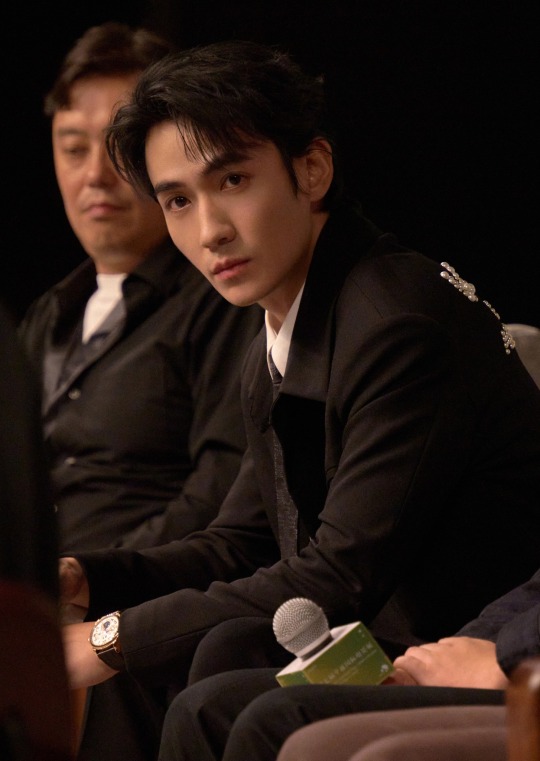



Zhu Yilong for the premiere of Only the RiverFlows at the 7th Pingyao Crouching Tiger Hidden Dragon International Film Festival
#zhu yilong#fashion#only the river flows#7th pingyao crouching tiger hidden dragon international film festival
4 notes
·
View notes
Text
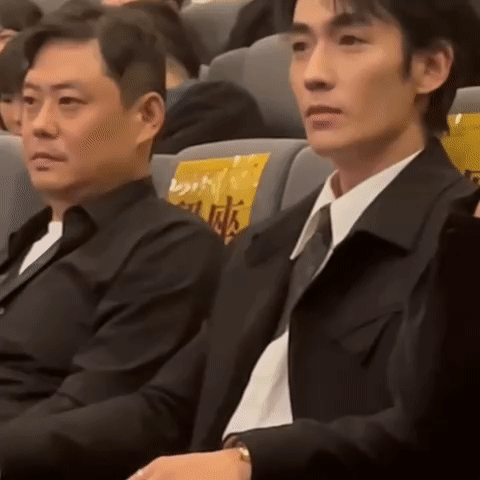

Long Ge with Director Wei ShuJun & Mistakes By The River Novella Author Yua Hua at the screening of film adaptation of the novella at the Crouching Tiger Hidden Dragon International Film Festival.
#zhu yilong#朱一龙#朱一龍#주일룡#my gifs#he’s way more chilled here than he was at Cannes#only the river flows
9 notes
·
View notes
Text
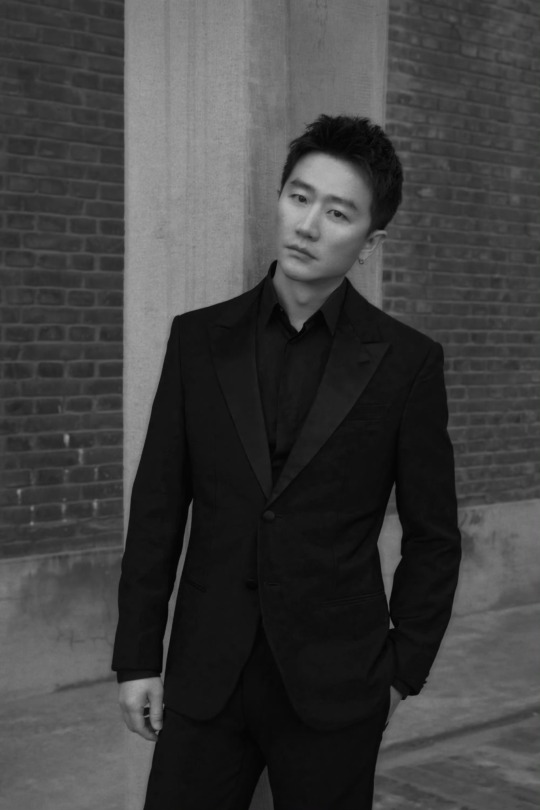
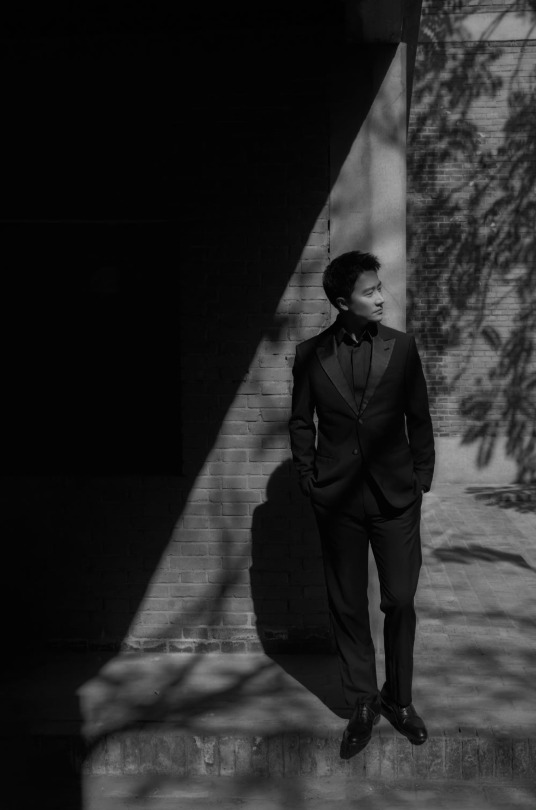
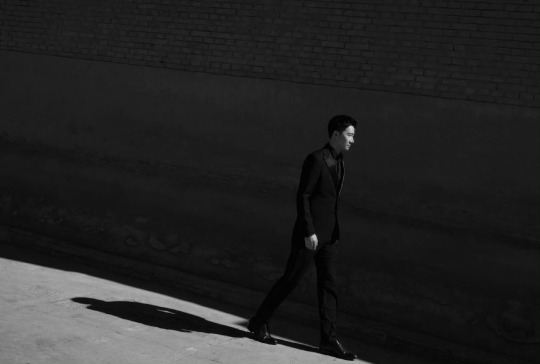

7th Pingyao Crouching Tiger Hidden Dragon International Film Festival closing ceremony
5 notes
·
View notes
Text
My Fire Eating Story
Main editing by Rion Fish, 2018, May 30th
Special thanks to Zofia Kaminski, Anna Tukachinskaya, Aetheria De Fleury, and Bethany Byrnes, for their contributions.
My name is April Jennifer Choi, and I used to be a Fire Eater. Over the years, I put in thousands of hours to become one of the most well-known, knowledgeable, and skilled fire-eaters in the world. Over the course of three years, I learned and categorized hundreds of fire-eating tricks and variations. I demonstrated, edited, and produced six volumes of The Fire Eating Tricktionary. I became one of the Admins of the largest fire eating Group on Facebook. I invented new fire eating torches and styles. I performed and taught Fire Eating for some of the top fire arts events in the US.
About a year and a half ago, I started to get sick. At first, I assumed this was due to a new medication, but a pattern emerged-- I was getting sick for days after fire-eating practice. On my birthday last year, April 13th, nausea, headache, vomiting, diarrhea, profuse sweating, abdominal cramps, and tachycardia set in. This was so severe that my fiancée, Bethany, tried to call an ambulance. I begged her no, before losing consciousness on the bathroom floor. This was the first time I had fuel poisoning, but not the last.
Over the course of the coming year, I was already booked to teach and perform fire eating all around the US; I went ahead with my schedule. After every major workshop, I would get sick. I cut back on my practice, and I noticed things got better. Due to other health issues, I have blood work on a bi-monthly basis. After one blood test, my doctor asked if there was anything I was doing that could be throwing the test off. I mentioned fire eating, which my doctor had seen me do in the local 4th of July celebration. My doctor recommended that I stop completely, and requested a follow-up test in two weeks. Two weeks crept by, in which I was unable to demonstrate any fire eating with fuel, despite teaching five fire-eating classes at PlayThink Movement Festival during that time period. I returned home, had my blood drawn, and the results were back within normal range.
I spent the autumn months teaching and performing with a limited trick set, nothing advanced, and with few negative occurrences. During this time, I decided to discontinue being a full-time performer and resume my engineering career. When the invitations for the 2018 festival season started to come in at the end of the year, I was repeatedly requested to teach and perform fire eating. I said yes, to way too many events, including both fire-eating workshops and a few fire eating world record attempts. I regret those choices.
The season kicked off, and I noticed that I was growing more sensitive. Filming for the “Best of Fire Eating” video, I limited my number of takes but felt ill for days after. I tried to rationalize and write it off; this could not be happening to me. During Flame Festival, one year exactly since my birthday celebration that I collapsed at, I noticed my symptoms were still more sensitive—to being around both UPLO and white gas. I started to ask questions and research what else could cause my decline. I changed my diet because I noticed that vegans and people with strict diets, seemed to suffer a bit more after fire eating or fire-breathing. I also found people who slept less, who weighed less, as well as others who didn’t use substances that potentially masked their symptoms, seemed to suffer more. I set out to better my lifestyle, to reduce the amount I would get sick, looking toward vitamin supplementation and cleaner fuels to improve my outlook.
Things did improve, until a long workshop in Iowa attempting a fire-eating world record. I felt terrible immediately and had to take the following day on bed rest. Things went downhill from here faster and faster. I filmed my submission for a fire-breathing collaboration video. Even using the standard, UPLO, which is considerably safer than white gas, and only a few breaths, I was sick once again. I was so sick that I decided then that I would quit fire-breathing; while it is an art that I enjoy, I love Fire Eating. Since I was still to teach at Kinetic Fire, the biggest fire festival in the Midwest, I took a few weeks off and hoped for the best.
At Kinetic Fire, I taught only three classes, one of which I supported with minimal demonstrations. I restricted the second class to a discussion. The third class involved vapor tricks, during which I did a few demos and some play with the other instructors. I did less than ten vapor tricks total. Within hours, things were bad. I decided not to participate in the fire circle and go to bed early. I couldn’t sleep due to painful cramping. Nausea, headache, sweating, and racing pulse joined in; I staggered to find a bathroom as fast as I could. I spent an hour that felt like forever with severe diarrhea, vomiting into a trash can, and feeling the worst I’ve ever felt in my life. The pain was intense, and nausea and irregular heart rate caused things to shimmer away in tunnel vision. When I was able to speak, I began yelling for help.
An event organizer heard me and radioed for a medic. The medic arrived, and I explained the situation as best I could. He said he could request an ambulance-- and I seriously considered it-- but I knew the situation and there wasn’t much to be done. After much comforting and examining, the medic retrieved my fiancée. I faced the fact that just a handful of vapor tricks caused my situation, and I had to completely stop both fire-breathing or fire eating.
I’ve always been chemically sensitive. A single coffee will keep me awake for many hours. A dose of Dramamine knocks me out. When going under general anesthesia for the first time, I was incorrectly dosed due to my low weight, and I spent the following days vomiting at home. Even with better sleep, diet, trying to find a cleaner fuel, and gaining weight, my situation was ugly.
I didn’t think much of fire eating in the beginning, but I fell for it hard. It connected me with an international talent agent and opened doors to performing around the world. I had world records and TV shows lined up to see what I can do with fire. I make love to fire in such that it dances on my lips. These are no parlor tricks; this is my joy, my pride, joining me to a global community of magicians, entertainers, and artists. I am admired for this. Despite that, as the sun was coming up at Kinetic, I faced the fact that fire eating is killing me.
The decision to quit fire eating is not an easy one. I am grieving. Some of my closest friends, my best companions, and my most trusted confidants developed because of this art. So many people I love and cherish were at Kinetic Fire, there to see as I was escorted to bed, to cry myself to sleep.
The next afternoon, I sat with my people, who inspire me so much. I cried in their arms and they cried back. They reminded me that I have other passions that are not fire-breathing or eating. I heard them, even as a piece of me was dying. Everyone who takes up this art is warned about the legion of risks, but I did not expect it to feel like this. We ignore the danger until it is all too tangible.
This week, I canceled all my upcoming record attempts, performances, and informed events that I couldn’t demo fire eating in my remaining classes. Each cancellation stung my heart. I continue to feel cold and distant; my dreams are up in smoke; this is not an easy lesson in acceptance.
I’m not leaving the community behind. I must take many steps back, but I will stick around to help people learn this beautiful art as safely as possible. I will help find safer ways to do this and I will warn people about the risks. I want my story to remind everyone that there are dangers to playing with fire other than just getting burned. I hope this warns those that discover their passion for fire arts to be more careful.
I pray for those blessed by the magic of fire eating, may they never be hurt by it. For more than the pain of a blistering burn, is the enduring heartbreak. Please, stay safe out there.
Addendum (June 25th):
So, it has been a month and I have talked to a lot of people about this in the fire eating and fire breathing worlds. Collectively, we have discovered 3 more things that I was doing that probably lead to my suffering when fire eating and fire breathing.
The first is diet; Adam Lobo pointed out that diet is a huge part of staying healthy while fire eating. Without going into a massive list of what’s good and bad, the main suspected foods that hold on to fuel and vapor better are fats and dairy. No one knows this for sure, but a number of fire eater and fire breathers have stated that reducing fats and dairy before fire eating, as well as increasing the amount of fiber reduced the chance or severity of them getting sick; while the opposite made them feel much worse.
Secondly is Hybrids and Dangerous Techniques. Derrick Vermin noticed when he started down the road of Solo-Hybrids and Fuel Traps he too began to feel ill. My journey took me way too far down this path. My Solo-Hybrid skills had me holding both Air and VG Vapor in part of my Lungs, WG in a tongue trap, and both UPLO and WG Vapor in my mouth to pull off certain tricks. Just the WG traps alone could have probably set off my immune system to go haywire let alone the plethora of dumb ideas such as popcorn, micro-torches, and the Vermin’s own technique of ‘Hidden Dragon’ and my version called ‘Crouching Tiger’.
Lastly, Cilantro the Clown pointed out that I practiced in a ‘Binge’ format. Where I would do a lot of fire eating or breathing in a 3-4 hour practice session or 5-6 hour workshop rather than 15-30 min every day. These ‘binge’ sessions are why I ended up so violently sick afterwards and my body probably recognized that the fuel was causing this and then started to react quicker and quicker each time. Had I spread my practice out more, I might have reduced the chance of the intense immune response I developed.
Now, due to my current health, I am not about to test these hypotheses out myself, but I want this information to be available so that future fire eaters and breathers can use it to progress the arts further while reducing possible adverse side effects. I will continue to collect information and knowledge for the safety and protection of fire performers that are wanting to pursue these arts and I hope many others are willing to do the same. Together, I want us all to continue to grow this magical world while keeping our members as safe as possible.
Google Doc Link:
https://tinyurl.com/myfireeatingstory
9 notes
·
View notes
Photo

The Warrior Heroes of Wuxia: Part 2 by Susan Doll
In my celebration of the four wuxia films currently streaming on FilmStruck, I approached the series in reverse chronological order. Last week, I focused on Zhang Yimou’s HOUSE OF FLYING DAGGERS from 2004, which represents the contemporary revitalization of this unique martial-arts genre by China’s Fifth Generation directors. (See also He Ping’s WARRIORS OF HEAVEN AND EARTH [’03]). Earlier examples of wuxia include the ground-breaking A TOUCH OF ZEN (’71) and DRAGON INN (’67) by King Hu.
Hu, however, directed his films outside Mainland China, because of the politics of the era. The wuxia protagonist is a warrior hero of the mythic past, a mercenary with a moral code who is skilled in the martial arts. During the 1930s, Chiang Kai-shek banned films featuring martial arts and magic in China, accusing them of looking backward instead of forward into a modern era. After the Communist Revolution, when Chiang Kai-shek retreated to Taiwan and China belonged to Mao, the Chinese film industry stopped producing martial-arts films altogether.
In the late 1940s, a steady stream of refugees from the Mainland ended up in Hong Kong, while personnel from the Shanghai and Taiwanese film industries found it less restrictive to work there. The result was a resurgence of Mandarin cinema in this tiny but heavily populated British colony.
By the 1960s, the Shaw Studio, led by Run Run and Runme Shaw, was the largest producer of films in the Hong Kong industry. The Shaws became successful by producing films in Mandarin Chinese for a population in exile. The content and genres produced in Mandarin were often nostalgic or set in the old homeland, including wuxia films. Chang Cheh, who directed over 100 films for Shaw Studio, updated the genre, adding new archetypes and motifs. Cheh introduced the wuxia warrior with a handicap in ONE-ARMED SWORDSMAN (’67), the story of a martial artist who loses his arm after defeating a master’s daughter in a fair fight. Despite his loss, he manages to learn the undiscovered art of one-armed swordplay. Influenced by Hollywood Westerns and Japanese samurai films, Cheh established the conventions for this wave of wuxia. Protagonists hailed from the lower classes and achieved their consummate skill through diligent practice. Wuxia warriors often banded together and dedicated themselves to protecting the weak and innocent. Eventually, the swordplay of wuxia was mixed with the legwork of kung fu.
King Hu would surpass Cheh as an innovator of wuxia films, because he brought a new level of technical artistry and a bit of Buddhist philosophy to the genre. Like Cheh, Hu drew on samurai movies and American Westerns, but he was interested in the visual techniques of those genres as well as their narrative conventions. He was also influenced by the Beijing Opera, which is evident in the ballet-like staging of his fight scenes. In COME DRINK WITH ME (’66), Hu cast dancer Cheng Pei-pei as the female protagonist who sets out to rescue her brothers from bandits. COME DRINK WITH ME established Pei-pei as an action star, at least until she went to America in the 1970s to get married. Over 30 years later, Ang Lee would cast Pei-pei as the evil mentor to the wuxia heroine played by Zhang Ziyi in CROUCHING TIGER, HIDDEN DRAGON (’00) as an homage to Hu. One of my favorite characteristics of wuxia is the use of women warriors who participate in the fight scenes with the skill and vigor of their male counterparts. Hu built on this convention with his female characters, who stand morally and physically above the crowd. They are strong-willed and determined, yet graceful and feminine. They don’t sacrifice their identities as women in their determination and duty.
Hu got his start as a director with the Shaw Brothers, but he left their studio in 1966 to move to Taiwan, where he made DRAGON INN and his masterwork A TOUCH OF ZEN. The former takes place in in an inn, one of Hu’s favorite settings. For Hu, the inn is a kind of mythical, mystical place where the laws of physics are suspended. Likewise, A TOUCH OF ZEN is set in the heart of a small village, where a haunted residence confounds the shy, young painter who lives next door with his mother. Equally as vexing to the unsuccessful painter is the enigmatic Yang (Hsu Feng), a fugitive noblewoman in disguise.
A TOUCH OF ZEN reveals King Hu to be a visually driven director. He suggests the haunted quality of the setting by focusing on long shots of the tall grass moving in the wind, and the fog eerily snaking through the village. Those tall grasses with white, bushy tops were not native to the area where the film was shot. The grasses were transported from another part of the national park in Taiwan where many of the scenes were shot because of the way they gently swayed in the wind. Hu, who was quite knowledgeable about Chinese history and culture, translated certain characteristics of Chinese painting into the medium of film. The mist and the treetops are obvious, but the connection between his horizontal tracking shots and Chinese scroll paintings is subtle. In a long shot of characters walking through the wilderness, the camera tracks with them from a distance. The take is long in duration as the camera keeps the characters center frame. Only the background scenery changes as the characters move screen left. The effect is like looking at a horizontal scroll in which your eyes move from one section of the scroll to the next.
The first fight scene between Yang and a corrupt general is a long time coming, but the graceful wirework as the combatants effortlessly glide over the rooftops and summersault through the air makes the wait worthwhile. Hu’s crisp editing and moving camera accentuate the choreography of the fight scenes, anticipating Zhang Yimou’s HERO (’02) decades later. The female protagonist, the wirework combined with martial arts and the mystical quality of nature found in A TOUCH OF ZEN became the conventions of the wuxia genre during the 1960s. The film was an international success and won the Golden Palm at the 1975 Cannes Film Festival.
King Hu returned to Hong Kong in the early 1970s. He was persuaded to direct films for Raymond Chow, who opened Golden Harvest studio in 1970. Chow had served as production chief for the Shaw Studio. When he decided to break out on his own, he snatched up some of the Shaw Brothers’ talent. Hu organized his own small production company but released his films through Golden Harvest.
During the 1970s, the martial arts film moved in a different direction. The fantasy elements, mythic-historical settings and female warriors were replaced by contemporary stories of cops and combatants who were experts in kung fu. Their feet were firmly planted on earth as they kicked, jabbed and jumped their way through tightly choreographed fight scenes. As wuxia films receded from the spotlight, King Hu could not sustain the momentum generated by A TOUCH OF ZEN, though he continued to direct films for the next 20 years. Still, DRAGON INN (aka DRAGON GATE INN) and A TOUCH OF ZEN were essential to the development of a genre, making King Hu a significant figure in film history. In that way, they are comparable to the early Westerns of John Ford or the English thrillers of Alfred Hitchcock.
36 notes
·
View notes